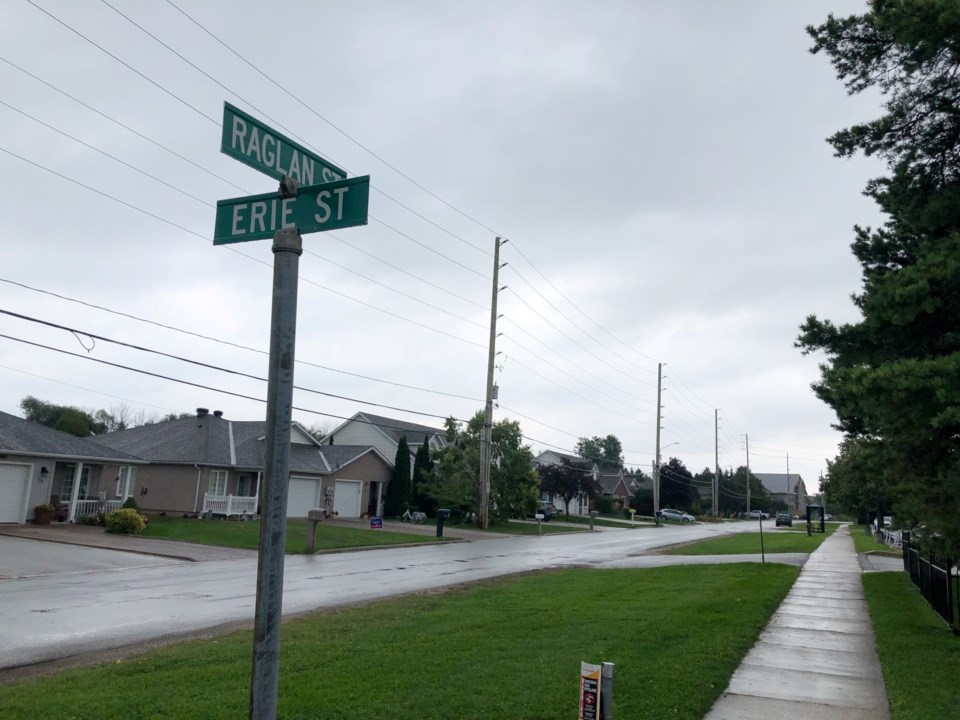Three years in to the Town of Collingwood’s traffic-calming policy, and no residents have been successful in meeting all the town’s requirements for installation of traffic calming in their neighbourhoods.
During council’s regular meeting on April 22, council received a memo from Peggy Slama, the town's director of public works, engineering and environmental services, outlining how the town’s traffic-calming policy has fared this year.
Through the report, there hasn’t been any traffic calming approved through the process since it was started in 2021.
“What this says to me, is our tool is broken,” said Coun. Deb Doherty. “By using this...data to measure speed, it does not take into account growing volume. We all know volume of traffic is increasing on our roadways because our population is growing.”
Collingwood’s traffic-calming policy was first green-lit by council in June 2021.
Under the policy, residents must take a series of steps before traffic-calming measures will be considered in their neighbourhoods. First, a formal request with a petition must be received supporting traffic calming measures. Following the petition, the road in question must meet five criteria: It must be considered a local road (collector roads could qualify on a case-by-case basis), it must have a daily average traffic volume of 900 vehicles, be at least 220 metres long without stop signs or traffic signals, have a grade below six per cent, and cannot have been part of a traffic calming request in the last three years.
If those requirements are met, staff will then conduct a speed survey.
Data collection will then take place to study traffic volume, collision records, pedestrian activity, and site-specific information. Then, staff will create a preliminary design that would be reviewed by emergency services, transit, and town operations for review and comment. The community would then be notified and preliminary designs shared.
Then, the measures would be built with notices sent to residents and posted publicly.
The policy states the exact traffic calming measures implemented in an area would be determined on a case-by-case basis and could include speed humps, speed cushions, extending curbs to narrow an intersection or create an s-shaped curve on a street, installing centre medians, using a mini roundabout in an intersection to slow through traffic, adding on-street parking and non-physical measures such as pavement markings, signage, and increased speed enforcement.
In 2022, due to complaints from the public on the arduous nature of the process, council voted through some small changes to the policy.
According to the memo, in 2023, five petitions requesting traffic calming were received by the town, (Raglan Street, Connor Avenue, Fifth Street, Minnesota Street and Pine Street) and all were deemed not eligible following the speed survey. In 2021, one petition was received for Second St., but was also deemed not eligible, and a petition was initiated in 2022 for Stanley St., but was not listed in Slama’s most recent report covering 2023 numbers.
“We need another mechanism to ensure our streets are safer particularly for pedestrian and active transportation users,” said Doherty at Monday’s meeting. “Based on how...this is working, none of our residents are ever going to successfully get traffic calming.”
Coun. Steve Perry and Coun. Kathy Jeffery agreed.
“I think people are very discouraged by this process. We were happy about it when we put it in place but it’s very discouraging. Who’s going to start applying now? It seems it doesn’t go anywhere,” said Jeffery.
“The results are telling us we need to go back to the drawing board and tweak it,” she said.
Coun. Christopher Baines also spoke about the conclusions the staff memo draws, which is that no changes to the policy are needed at this time.
“I’m disappointed in the conclusion because empirically, from the residents I speak to, this is an ongoing problem,” he said.
This year, there have been 15 locations across town marked for temporary traffic calming measures, mostly adjacent to schools. Permanent speed humps have been installed near Mountain View Elementary School, on Third Street and Spruce Street. Future plans for traffic calming include addressing Findlay Drive between High St. and Hurontario and Peel St. between Hume St. and Collins St.
Work on the town’s master mobility and transportation plan is currently underway, and through that exercise, the town will consider speed reductions.
At the end of the meeting, Jeffery put forward a notice of motion directing staff to revisit the traffic calming policy parameters. The motion will be considered by council at a future meeting.



